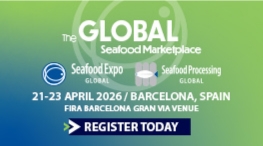This article was featured in Eurofish Magazine 4 2025.
Based in Denmark, Iras has long been a key supplier of fish handling equipment to the global fishing and aquaculture sectors. With decades of experience in pumping and grading -solutions, the company -continues to adapt its systems to meet the demands of evolving species, vessel types, and farming environments. At the core of Iras’s offering are systems that move fish gently and efficiently—whether from trap nets on coastal boats or through large-scale -aquaculture installations. The company also provides grading equipment, which sorts fish, and is designed in both compact and full-scale versions for use on vessels or at land-based facilities. Peter S. Rasmussen, the CEO, emphasises Iras’s commitment to adapting its -equipment for new challenges. Species like kingfish, for instance, are stronger and more resistant to conventional pumping methods than salmon. Rather than simply increasing pump speed or power—which risks damaging the fish—Iras is exploring more sophisticated ways to improve flow and reduce stress during transfer.
A recent example of Iras’s versatility is its collaboration with small-scale fishermen in Estonia, where it provided a pump system tailored for trap net operations on compact vessels. This attention to smaller-scale operations sets Iras apart from some competitors who focus on large wellboats or big fishing vessels. While Europe remains Iras’ primary market, the company also has clients in South America and parts of Asia. Its equipment is known for consistent build quality, with the same stainless steel construction used across all systems, whether for vessel or land installations. Beyond pumping and grading, Iras also offers ice handling systems, though this remains a -smaller part of its business. Looking ahead, the company is preparing for industry trends such as deeper fish tanks and larger farms, which pose challenges for traditional vacuum systems. Though Mr Rasmussen declined to reveal specifics, he confirmed that Iras is actively developing new solutions to meet these technical limits so that the company is well positioned to support the future of sustainable and efficient fish handling worldwide.









